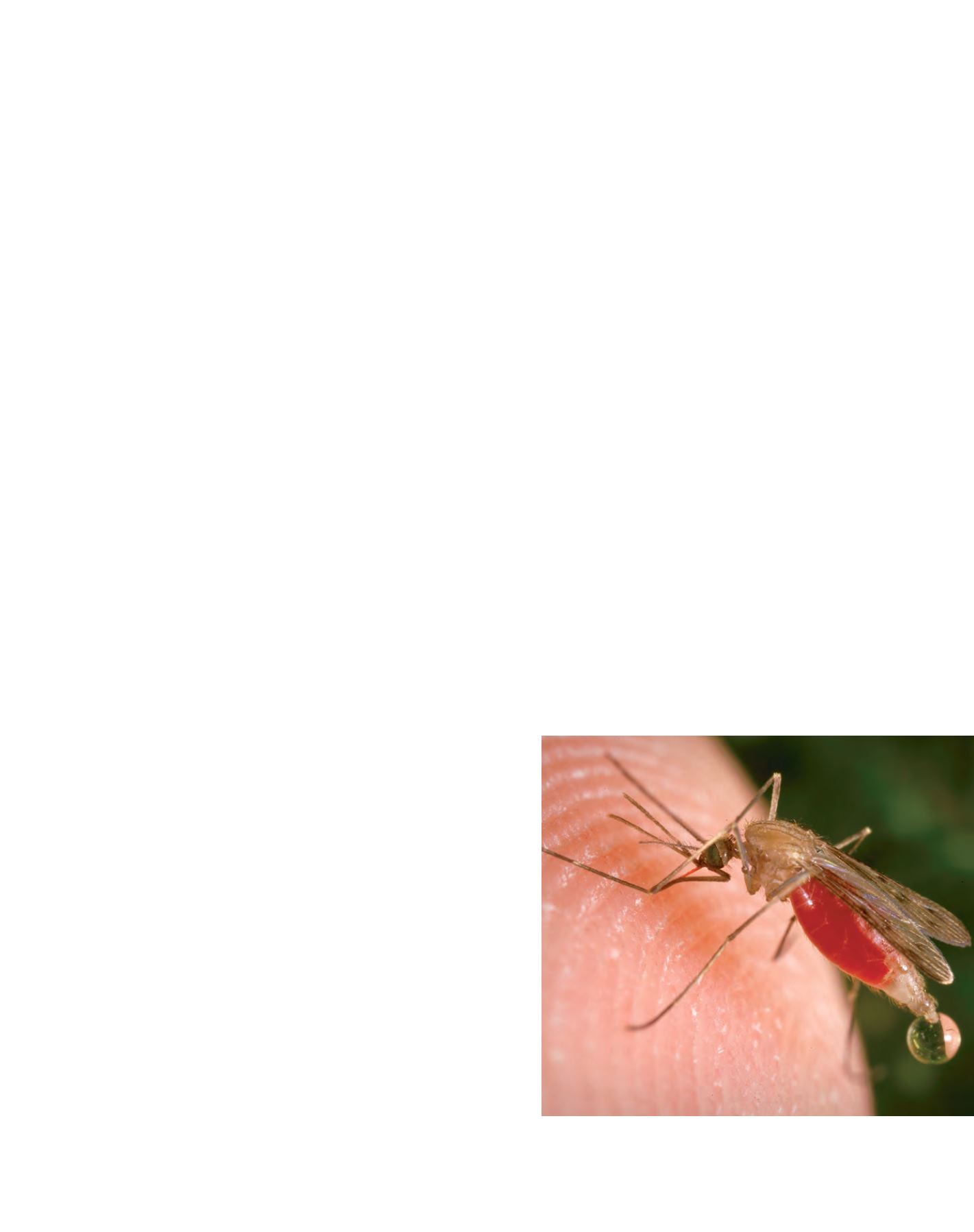

T
he
I
mpacts
and
I
mplications
of
C
limate
C
hange
and
V
ariability
countries (Ethiopia, Kenya and Madagascar) have centred
on the establishment of Climate-Health Working Groups
(CHWGs). The CHWGs aremulti-agency partnerships –in
each case chaired by the Ministry of Health and co-chaired
by the National Meteorological Services – with members
drawn from supporting agencies (UN agencies, and govern-
mental and non-governmental organizations) providing
broad support to the health sector.
11
These multi-agency
initiatives offer a good opportunity to elicit broad needs
for climate risk management and stimulate demand for the
development of appropriate training and services.
Concerns over climate change have heightened the
urgency of achieving significant advances in disease reduc-
tion and health care delivery. Increasing urbanization has
led to the situation where more than half of the world’s
population are living (formally and informally) in cities
and their margins. Dengue is emerging as a major threat
to urban and peri-urban populations in Asia and Latin
America. Uncertainty in understanding the impact of a
warming climate on regional rainfall distributions hasmajor
implications for rain-fed agriculture, water resources, food
security and malnutrition among the rural poor; each of
these poses its own unique set of challenges regarding
climate-health policy recommendations and guidelines for
practice in improving and maintaining health outcomes.
12
While there are promising examples demonstrating the
basis of climate riskmanagement in the health sector, much
more needs to be done in building research capacity and
developing appropriate educational curricula. Currently
there are few boundary institutions able to provide the
level of training required at this interface, and this requires
significant investment if we are to have new generations of
appropriately trained professionals ready and able to tackle
the risks of a constantly changing climate.
deaths in France numbered only a few hundred, and for Europe a few
thousand. While this was extremely good news, and suggests that early
warning systems might be contributing to this reduction, the importance
of socioeconomic factors with regards to climatic factors is yet to be
clearly understood. While heat early warning systems offer benefits in the
immediate-term more should be done to encourage greater promotion
of insulation, ventilation and improved home design by urban planners
and buildings regulators. By managing current climate risk and lowering
vulnerability public health and allied services provide examples of adapta-
tion to a changing climate.
Epidemic disease in the tropics
Malaria and dengue are vector-borne diseases associated with tropical
regions – however, their persistence in the tropics is strongly related
to poverty and under-development. Malaria was rife in Europe and
North America prior to its eradication between 1940 and the 1950s. It is
now widely recognized that malaria is a major constraint to both socio-
economic development and the MDGs in Africa, where an estimated
90 per cent of all malaria deaths, and immeasurable sickness occurs.
Approximately 500 million Africans live in regions endemic to malaria.
Endemic malaria is highly correlated with climate in terms of its spatial
distribution and its seasonality. A further 125 million Africans live in
regions prone to epidemic malaria, which is again highly correlated with
climate, but in this case, with climate anomalies. Significant resources are
nowbeingmade available to control malaria in African countries through
the Global Fund for AIDS, TB and Malaria. It is considered that climate
information could be used to help focus these resources more effectively.
While significant gaps have been identified between climate services
and end-users in Africa, a number of African countries seek to use climate
information as part of integrated epidemic early warning and response
systems. The most advanced example can be found in Botswana where
the National Malaria Control Program uses tailored seasonal climate
forecasts and weather scale information received through the National
Meteorological Services as part of an effective Malaria Early Warning
System. State-of-the-art seasonal forecasts derived from the EU’s
Framework 5 and Framework 6 DEMETER and ENSEMBLES project
have been produced at the Southern African Development Community’s
Drought Monitoring Centre andmade available to theMinistry of Health
and theWHO Intercountry Team for Malaria Control in Southern Africa.
The forecasts, which have shown predictability of high (and low) malaria
years with fivemonths lead-time,
6
are followedwith rainfall routinemoni-
toring products, which add confirmation of risk and more geographical
focus, with high predictability at one to two months lead-time.
7
Botswana’s example has been promoted by WHO to encourage other
African countries to follow suit and there are clear signs of improved
management of epidemic malaria in the region.
8
This has been managed
to some large extent through the Malaria Outlook Forums with their
special focus on providing appropriate climate information to the
national malaria control programmes in Southern Africa.
9
Preliminary
economic studies also show strong potential for cost advantage of using
climate information to guide the extent of malaria control activities in
this region.
10
However, if such initiatives are to perform at the scale required,
including the densely populated highland fringe epidemic settings
where the interplay between rainfall, temperature and humidity is more
complex, then significant interdisciplinary research and collaboration
is essential. Appropriate training must be provided, and mechanisms
developed across disciplines, to address socioeconomic vulnerability
to severe disease outcomes. Recent initiatives in a number of African
Anopheles freeborni
takes blood from a human host
Image: James Gathany/2004
[
] 49
















